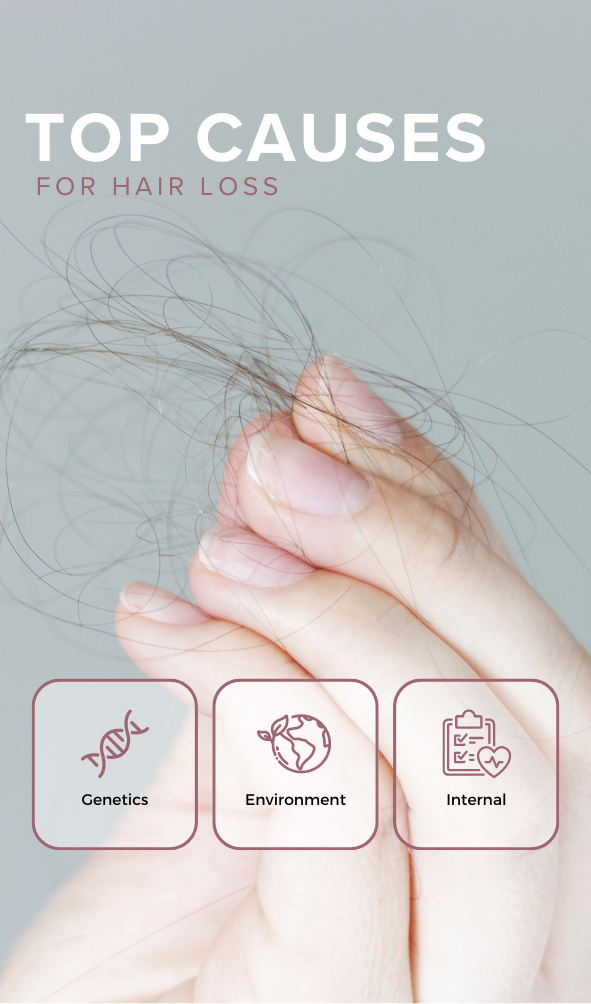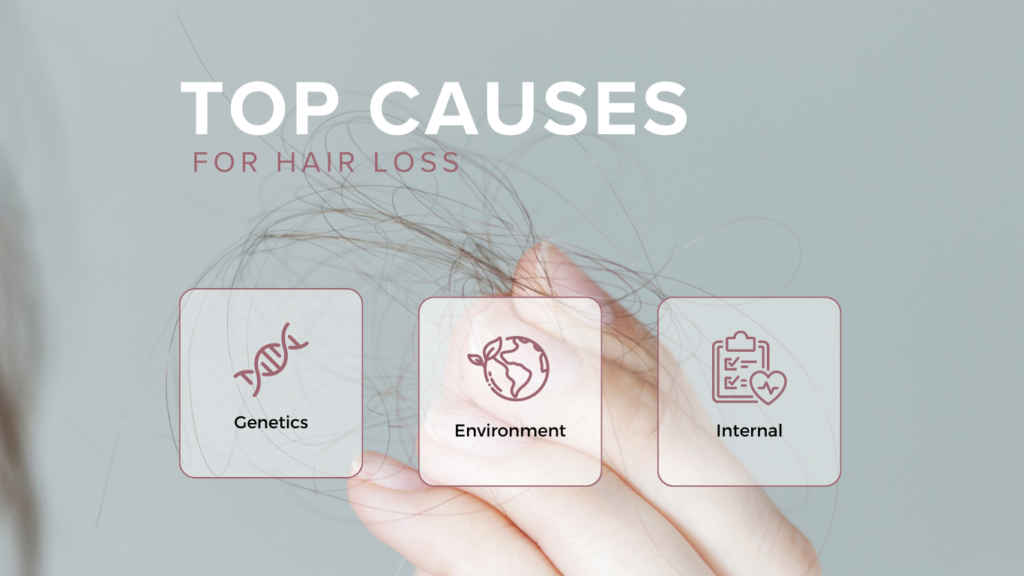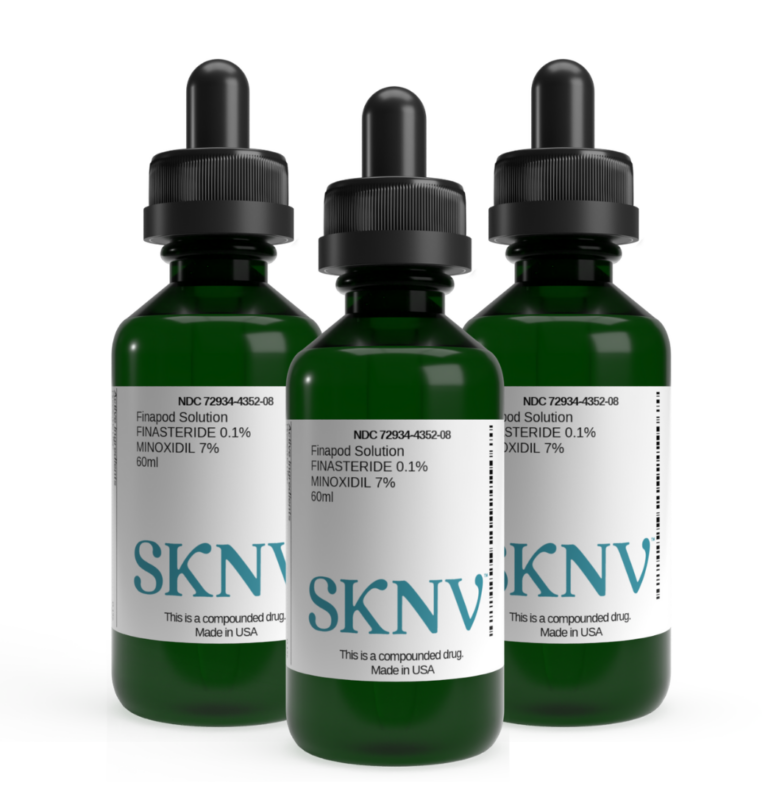By Ava Malkin
At SKNV, we understand the complexities of alopecia areata, and we recognize the importance of widespread awareness and the need for customized medications to target hair growth and prevent further hair loss.
With September being National Alopecia Areata Awareness Month, we want to recognize this skin disease, bringing attention to its definitions, symptoms, affected populations, causes, diagnosis, and treatment options, while also exploring some expert dermatologist insights.

Alopecia areata is a skin disease that causes hair loss on the scalp, face, or another area of the body. The severity of hair loss with alopecia can range from small, circular patches in scalp hair or facial hair to complete hair loss across the entire body. The condition often begins with the former, causing patchy hair loss or thinning hair, and then it develops into the latter. [1]
This skin condition is quite common. It impacts around 7 million Americans and approximately 160 million individuals worldwide. [1]
The word “alopecia” means hair loss, while the term “areata” means patchy, hence the definition for alopecia areata being an autoimmune disease that causes hair loss.
There are other terms for this condition depending upon the area in which hair loss occurs. Alopecia ophiasis involves slight hair loss on a specific area of the scalp. Alopecia totalis involves complete hair loss on the scalp. Alopecia universalis involves hair loss on the entire body. Alopecia barbae involves patchy hair loss on a beard or facial hair. [2]
Androgenetic alopecia is another common form of hair loss for a large population. Also referred to as male pattern baldness or female pattern hair loss, this type of alopecia causes 50 million men and 30 million females in America to begin losing hair. [3]
Length of alopecia episodes vary. Some patients notice new hair growth with treatment. Without proper treatment, patients might see more hair loss. Individuals might even regrow hair on their own. Therefore, frequency and duration of hair loss is dependant upon the individual.
Alopecia areata may appear in individuals of all ages, genders, and racial/ethnic identities. However, research indicates some patterns of this skin disease among certain populations.
Age: One investigation found that 80% of participants experienced an onset of alopecia by the age of 40, while 40% of patients experienced alopecia symptoms by the age of 20. [4] Other scholars
Gender: Some research finds that women are more likely to show signs of alopecia areata than men. [5]
Racial/ethnic identities: Medical and dermatology scholars found that alopecia areata was more common among “persons of color” or Asian, Black, and Hispanic/Latino patients. [5] Other studies have found that Asian populations are less likely to have alopecia areata than White populations. [6] Therefore, the realm of literature is unclear on which racial or ethnic groups is more inclined to develop the skin disease, further emphasizing that alopecia areata impacts individuals across identities.
Genetics: Those with genetic predispositions (i.e., family members with alopecia areata) are more likely to experience hair loss.
Comorbidities: The aforementioned factors may also contribute to comorbidities, or conditions experienced simultaneously with alopecia areata. One study found that the most common diseases associated with alopecia areata include anxiety, dermatitis, hypothyroidism, hyperlipidemia, and vitamin D deficiency. While these cannot be distinguished as definite causes or effects, it is important to note, as age and gender may also factor into this consideration. [7]
In other words, while research indicates hair loss is sometimes more prevalent in certain populations, it is clear that this skin condition affects many people across generations, genders, and cultural identities.

Being that alopecia areata is among the category of autoimmune diseases, it involves the immune system falsely attacking hair follicles, causing inflammation and hair loss.
Although, scientists are not entirely sure what motivates and activates the immune system to attack follicles. It is believed that there are genetic, environmental, and other internal (i.e., viral, bacterial, fungal) causes. [8, 1]
While the exact trigger is unknown, it is widely recognized that this skin condition begins with patches of hair loss.
Medical professionals can usually diagnose this skin disorder through a physical examination, paired with some questioning about when and where you notice hair loss, how much hair is lost, if you have a family history of alopecia (i.e., hereditary hair loss), and if you recognize any other changes in hair density or thickness.
If the healthcare provider cannot determine the condition from this exam, they might take a hair sample, a scalp sample, or conduct blood tests to make an official diagnosis. [9]

While there is no absolute cure for alopecia areata, various methods of hair loss treatment can help individuals with hair growth and/or can work to stop hair loss.
Topical treatment options to stimulate hair growth often involve the following:
Corticosteroids: This class of anti-inflammatory medications can help hair grow by addressing the autoimmune impacts of this skin disorder.
Some examples of corticosteroids include Betamethasone Dipropionate and Fluocinolone Acetonide.
Minoxidil: This topical drug works to ensure that patients keep the hair that grows.
Finasteride and progesterone: This class of drugs called “5 alpha reductase inhibitors” work to inhibit the transition of testosterone to dihydrotestosterone (DHT). In other words, these steroids try to increase hair growth in the areas impacted by alopecia areata.
Tacrolimus: This ingredient, often considered an alternative to corticosteroids, has been found effective in treating the inflammatory symptoms of alopecia areata. [11]
Immunotherapy: This process involves purposeful irritation and allergic reactions in an attempt to stimulate hair growth.
Steroid injections, oral medications, and other procedures (e.g., phototherapy, plasma injections) are also available for patients with more severe hair loss. [10]

As the first pharmacy for sensitive skin, we comprehend the complexities of alopecia areata, and we offer customized medications to target this skin condition and its manifestations.
SKNV’s 14 unique topical medications are dedicated to addressing alopecia in men and women, making a clinical difference for each patient, as determined by their prescriber. These formulations come as solutions, a vehicle that differentiates SKNV’s offerings from ointment, cream, lotion, or gel treatments for alopecia.
Our tailored medications also feature unique combinations of APIs, which have been carefully selected to target hair loss concerns. The active ingredients in these customized solutions include minoxidil, betamethasone dipropionate, pentoxifylline, finasteride, dexamethasone sodium phosphate, fluocinolone acetonide, tacrolimus, tretinoin, and niacinamide. These APIs are combined into solutions at various potencies, available to adjust to the needs of each individual patient as determined by their provider.
Not only do we present combinations different from branded or generic medications, but we also consider potentially harmful inactive ingredients for patients on their hair growth journeys. We offer topical medication options that are formulated without certain inactive ingredient(s) that could be potential allergens or irritants for certain patients, as determined by the patient’s prescriber. Many formulations aim to eliminate ingredients like polysorbate 60, trolamine, hydroxypropyl cellulose, methylparaben, isopropyl myristate, mineral oil, petrolatum, sodium hydroxide, and butylated hydroxytoluene.

SKNV aims to ensure targeting your alopecia concerns is a simple and accessible experience.
To obtain our tailored topical alopecia medications:
Patients can ask their provider about SKNV medication and discuss which formulation is best for their hair loss patterns and hair regrowth desires. View the list of our alopecia medications.
Providers can find our alopecia Rx through their Electronic Medical Records (EMRs).
Providers can prescribe the medication directly from their office, and patients can leave with their Rx in-hand.
OR
Patients can receive their Rx directly to their homes and with free shipping.
Now, it is clear that SKNV’s offerings are distinct and convenient, but how exactly do these customized topical formulations operate in practice? What do dermatologists think about our medications? How do patients react? What other advancements are occurring in the dermatological field, particularly concerning hair loss?
To seek answers regarding the real-life impacts of our alopecia medications and the realm of hair loss treatment generally, we spoke with Dr. Dina Strachan as a part of our SKNV DermTalks podcast.

Dr. Dina Strachan is a respected board-certified dermatologist and founder of Aglow Dermatology.
Her expertise in the field of dermatology began in medical school in the 1990s during the AIDS epidemic. Dr. Strachan noticed that AIDS patients were also experiencing skin conditions, leading her to a career in dermatology. She is especially known for her knowledge surrounding hair loss treatment.
“When I came out as board-certified, there wasn’t as much available to help patients with hair loss. But, fortunately, where I trained… I was privileged to get that kind of training,” Dr. Strachan explained. “So, when I went out into private practice, and I was treating hair loss patients, it was just something I was expecting to do, the patients were happy, and they had found someone who was… going in depth with them. And then they would get results, and then they would tell other people. So they told me I was a hair loss expert.”
This proficiency in hair loss treatment led Dr. Strachan to SKNV and our customized medications. She prescribes our 14 alopecia formulations and even dispenses SKNV solutions from her office.
When speaking about the benefits of SKNV’s formulations, Dr. Strachan touched upon SKNV’s affordability, accessibility (which has helped her increase compliance), unique combinations of active ingredients, and consistency.
In terms of affordability, Dr. Strachan explained that patients experiencing hair loss should not have to pay extremely outrageous prices to obtain effective treatments.
When discussing patients with chronic problems and hair loss concerns, she stated, “They may get a lot of benefit just from the topical, and then you have less of a risk of a side effect. And it’s actually a lot less expensive… Often, I say to people, you can start out with the solution that’s about $55… if that works, then why spend 1,000, right?”
She continued by explaining how SKNV’s medications provide assurance to her that her patients will be able to afford and actually obtain the medications she prescribes.
“I like the idea that the SKNV products are a predictable price, so I can pretty much tell them a ballpark of what something is going to cost,” Dr. Strachan said.
With this predictable pricing, Dr. Strachan finds that it assuages many difficulties and stresses of the prescribing process for her.
“It just makes it very easy for the patients to be able to offer them something that is not just generally available, and I know exactly what they’re going to cost, and I know exactly how they’re going to get them. I can dispense them in my office if I didn’t sell out already, or I can write a prescription,” she said.
Not only does this make the alopecia areata treatment process simple for the prescriber, but it also makes it more convenient for the patients to know exactly what ingredients they will receive in their topical medications, how they will receive it (quickly), and how much it will cost.
Dr. Strachan also addressed how SKNV’s alopecia offerings feature distinct combinations of active ingredients in one medication.
She explained, “You’re offering things that are not available so readily. So, sometimes I’m combining things… I like that it’s one product, which also helps with compliance.”
With many of Dr. Strachan’s patients experiencing inflammatory hair loss, she finds that SKNV’s medications are advantageous because of this affordability, accessibility, and unique combinations. These are benefits of SKNV that Dr. Strachan trusts and relies upon.
While discussing our alopcia formulations, Dr. Strachan stated, “They’ve been very consistent. And it’s just very easy to incorporate SKNV because you have so many options. You can dispense them in the office. You can prescribe them. If you run out in the office, you can prescribe them. Everything’s in your system. It’s just very nice.”
We are grateful for prescribers like Dr. Strachan for recognizing and appreciating how we revolutionize the dermatological field, while also providing their patients with high-quality and clinically different alopecia areata medications.
Beyond SKNV, Dr. Strachan gave us many useful insights into advancements in alopecia areata treatments.
Concerning technological advancements and their impact on how doctors treat hair loss, Dr. Strachan spoke about the advent of AI in medical research and treatment.
“With respect to hair loss, I know that it’s [AI] is being used in research. So, I know that there are AI systems that are used to analyze photographs, to detect changes in hair growth that can’t be detected by the human eye, and that it’s being used in robotics to treat hair loss. Sometimes, I believe, there’s some AI systems that do hair transplants,” she explained. “But I think my concern with AI is I believe technology should be our servant, not our master. And I think it needs to be regulated, and it needs to be vetted. It needs to be held to the same standards that a person who goes into medicine is held to.”
Dr. Strachan also addressed other forms of technology that are used for alopecia areata, including red-light therapy to reduce inflammation and increase blood flow in areas of hair loss.
For more observations on the world of hair loss, listen to Dr. Strachan’s SKNV DermTalks episode, where she shares a wealth of knowledge and advanced understanding of hair loss.
We use cookies to improve your experience on our site. By using our site, you consent to cookies.
Websites store cookies to enhance functionality and personalise your experience. You can manage your preferences, but blocking some cookies may impact site performance and services.
Essential cookies enable basic functions and are necessary for the proper function of the website.
Google Tag Manager simplifies the management of marketing tags on your website without code changes.
These cookies are used for managing login functionality on this website.
Statistics cookies collect information anonymously. This information helps us understand how visitors use our website.
Clarity is a web analytics service that tracks and reports website traffic.
Service URL: clarity.microsoft.com
SourceBuster is used by WooCommerce for order attribution based on user source.
Marketing cookies are used to follow visitors to websites. The intention is to show ads that are relevant and engaging to the individual user.
Facebook Pixel is a web analytics service that tracks and reports website traffic.
Service URL: www.facebook.com
LinkedIn Insight is a web analytics service that tracks and reports website traffic.
Service URL: www.linkedin.com
TikTok Pixel is a tracking tool that measures user interactions and optimizes ad campaigns on the TikTok platform.
Service URL: ads.tiktok.com
You can find more information in our Terms and Conditions and Terms and Conditions.